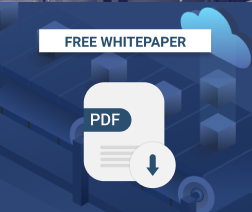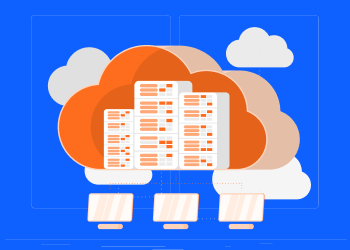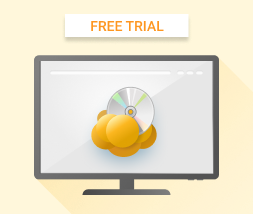In certain cases, Linux offers great advantages to MSPs who need an operating system to run on their own systems, or to provision servers and workstations for their clients. Most Linux distributions are free of cost. There is also a variety of free applications available to run on them. You don’t need to worry about managing licenses. Linux, in general, is not susceptible to most of the malware that can affect Windows.
That said, Linux is not always the right solution for MSPs. Below are four reasons why Linux may not work well for your MSP business.
1. You Have to Factor in Labor Costs
In most cases, Linux itself is free of cost. (Some Linux distributions, such as Red Hat Enterprise Linux, cost money.) But your total cost of ownership for maintaining a Linux system could be higher, especially if you need to hire skilled Linux admins, who can be harder to find (and therefore more expensive) than Windows system administrators.
In addition, many of the applications available for Linux don’t come with commercial support services. This may also increase the time that your staff has to spend maintaining Linux-based systems, which will also bloat your costs.
2. Lack of Support
On that note, not only does lack of professional support mean that your staff may have to spend more time maintaining Linux systems, but it also raises the risk that you will run into a support situation that you simply can’t resolve. You may have a strange configuration issue, for example, or you may need to deploy an application (such as a client’s line-of-business app) that just doesn’t run at all on Linux.
While community-based support forums can offer some help in these situations, you won’t get the level of dedicated, professional support that you will when working with a commercially supported software platform.
Further reading How Important Are Linux Skills for MSPs Today?
3. Different Solutions Stack
Linux can now run most of the same end-user applications as Windows. If there is a Windows application that won’t run locally on Linux (such as Microsoft Word), there is usually a cloud-based alternative (like Microsoft 365 or Google Docs) that will.
In other ways, however, the software stack that you would run on Windows is very different from that for Linux. Moreover, Linux has a fundamentally different security model. Instead of using tools like Windows’s firewall or access control tools, you’ll need to learn about Linux iptables and how the Linux passwd file works.
Likewise, remote access to Linux systems is different than it is for Windows. You can’t use RDP natively with Linux (Linux RDP clients exist but, because they are not officially supported by Microsoft, performance can be spotty); instead, remote access for Linux typically revolves around command-line tools like SSH. (You can access graphical applications remotely, too, over SSH using a technique called X11 forwarding, but doing so is complicated and tends not to work well with non-local network connections.) Managing access credentials for remote systems is also different in the Linux ecosystem, as LDAP is more commonly used than Active Directory.
File backup, too, works differently. In Windows, you would typically use a graphical front end to manage data backups. On Linux, you would use a command-line tool like rsync. Some Linux distributions provide graphical tools for managing backups, but they are specific to certain types of Linux environments.
In short, using Linux requires you to learn an entirely different set of tools and concepts for managing your system than the ones you already know from Windows.
4. Increased Management Overhead
Unless you migrate all of your systems to Linux -- which you probably shouldn’t, because you’ll still need Windows machines on hand for situations where you can’t run a certain tool on Linux -- adding Linux systems to your own solutions stack, or to your clients’ infrastructures, means that you have another type of system to support.
In turn, you end up with more management overhead and complexity. Although some tools (like MSP360 Managed Backup Service) work on both Linux and Windows, for other tasks (like software updates and application deployment) you’ll need to set up different monitoring and management solutions. You may also need different teams of technicians for handling support requests for each type of system.
Further reading MSP Tools for Supporting Mixed Windows/Linux/macOS Networks
Further Resources on MSP360
Explore more MSP360 products for MSPs like RMM software, a powerful monitoring and alerting platform with automated patch management, and HALOPSA integration, to ensure endpoints remain secure and operate smoothly.
Start securing your IT environment today with our Free Backup Software or explore the full range of features like our file backup software. We are a trusted company committed to your success.Our solutions include:
Managed Backup: This service offers reliable cloud backup and image-based protection. A key feature is the dedicated SaaS backup for popular platforms of Microsoft 365, including OneDrive backup, Outlook Backup features, and Google Workspace.
While some MSPs grapple with the pitfalls of adopting Linux environments—such as elevated labor costs and fragmented support systems—leveraging cloud-native solutions like Amazon CloudFront or Amazon S3 can streamline content delivery and storage without the latency headaches of traditional setups. To stay competitive, MSPs must prioritize 5 ways 5G networking opens new frontiers for MSPs, from edge computing migrations to real-time device backups that minimize downtime in distributed IT operations. Implementing 6 ways to minimize downtime in IT operations through proactive monitoring and hybrid strategies is essential, particularly when paired with advanced enhanced hybrid backup features in tools like MSP360 Backup, which now include new real-time backup functionality for near-continuous data protection. Yet, amid rising cyber threats, asking are you doing enough for cybersecurity prompts a deeper dive into adopting a security-first approach, where strategies like air-gap vs. immutable backups provide ransomware-resilient layers. For cost-effective archiving, transitioning to AWS S3 Glacier storage class instead of AWS S3 Glacier vaults offers a step ahead in scalability, while developers managing Azure resources might debate Azure CLI vs. PowerShell for automation efficiency. Ultimately, driving growth requires 5 ways to improve sales and marketing, from refining service catalogs to highlighting unique value propositions like those validated in the Backup review by Lawrence Systems, ensuring MSPs not only survive but thrive in a security-conscious ecosystem.
Conclusion
Linux can be a great solution for some MSPs -- but only those who already know how Linux works, and who have the expertise on hand to maintain Linux systems.
For others, it’s wise not to be tempted by Linux’s low (or non-existent) price tag. Although Linux may seem like a bargain, it will likely end up costing you more in time and money than it’s worth if you lack the right skills to leverage Linux effectively.








